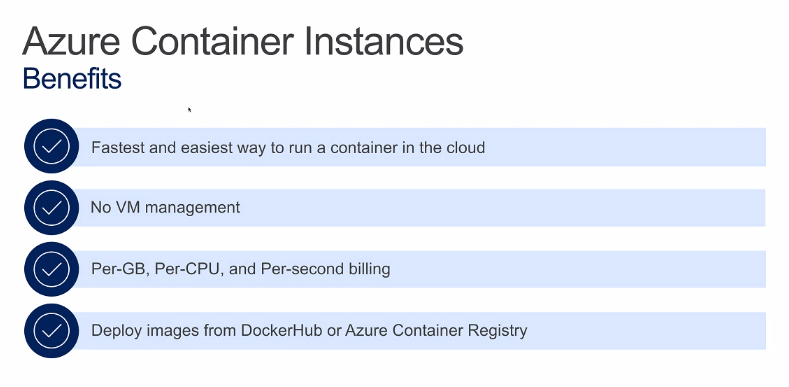Microsoft’s new Azure Container Instances make using containers fast and easy

Barely a day passes without some news about containers and that speaks to how quickly this technology is being adopted by developers and the platforms and startups that serve them. Today it’s Microsoft’s turn to launch a new container service for its Azure cloud computing platform: Azure Container Instances (ACI).
The company also today announced that it is joining the Cloud Native Computing Foundation as a platinum member (that’s a $370,000/year commitment).
While we’ve seen our fair share of container-centric services from the major cloud vendors, ACI is different from the likes of Azure’s existing Container Service, AWS’s EC2 Container Service and the Google Container Engine.
ACI, which is now in preview, is all about simplicity. It lets you spin up a single container with your choice of memory and CPU cores in a few seconds and usage is billed by the second. As Microsoft stresses, these containers are first-class objects on Azure and get all of the same role-based access controls, billing tags and other features that you’d expect on the platform. These containers are isolated from other customers using “proven virtualization technology,” Microsoft says.
What you don’t get, however, is the hassle of having to manage VMs or learning about container orchestration. If you do want to use orchestration, though, you can do that with the help of Microsoft’s new open source Kubernetes connector. This allows Kubernetes clusters to deploy containers directly to ACI and lets developers mix and match VMs and ACI as needed.
Right now, ACI only supports Linux containers but it will soon also support Windows Containers as well. Deploying a container only takes a single command with a few basic parameters and you can pull containers from public repositories like the Docker Hub or our private repositories on Azure.
Given its speed, the main use case of ACI is probably for bursty workloads and scaling. One of the main advantages of containers is that you can easily move them between services, so going from ACI to a more traditional VM-based container infrastructure shouldn’t be a problem.
“This offers a level of agility for deploying Kubernetes, unlike any other cloud provider, enabling services that start in seconds without any underlying VMs and are billed and scaled per second,” Corey Sanders, Microsoft’s Head of Product for Azure Compute, writes in today’s announcement.
As Sanders also announced today, Microsoft has decided to join the Cloud Native Computing Foundation (CNCF) as a Platinum Member. The foundation hosts the Kubernetes project, as well as a growing number of other open source tools that help developers build, monitor and manage container-based applications. Other CNCF Platinum members include the likes of Cisco, CoreOS, Dell Technologies, Docker, Google, Huawei, IBM, Intel, Joyent and RedHat. The CNCF is a Collaborative Project of the Linux Foundation — which Microsoft joined last year.
“Cloud native technologies like Kubernetes enable better developer productivity, higher frequency deployments and more efficient utilization of computing resources,” Dan Kohn, Executive Director of the Cloud Native Computing Foundation, told me. “Active engagement by companies like Microsoft means that cloud native will increasingly be the standard way to deploy software both for new, greenfield applications and the standard platform for evolving existing monolithic applications into the cloud native future.”
Featured Image: shutterjack/Getty Images

